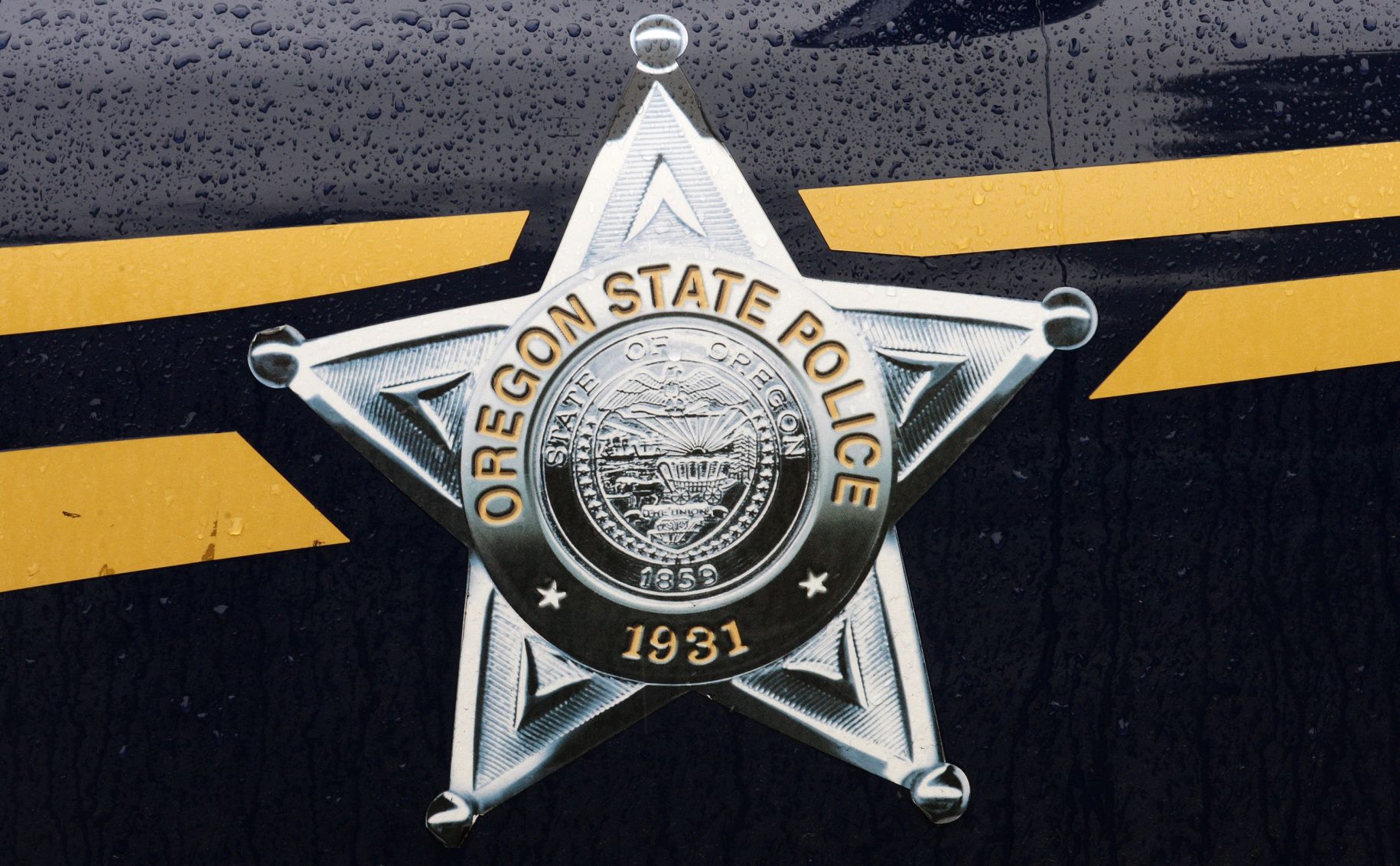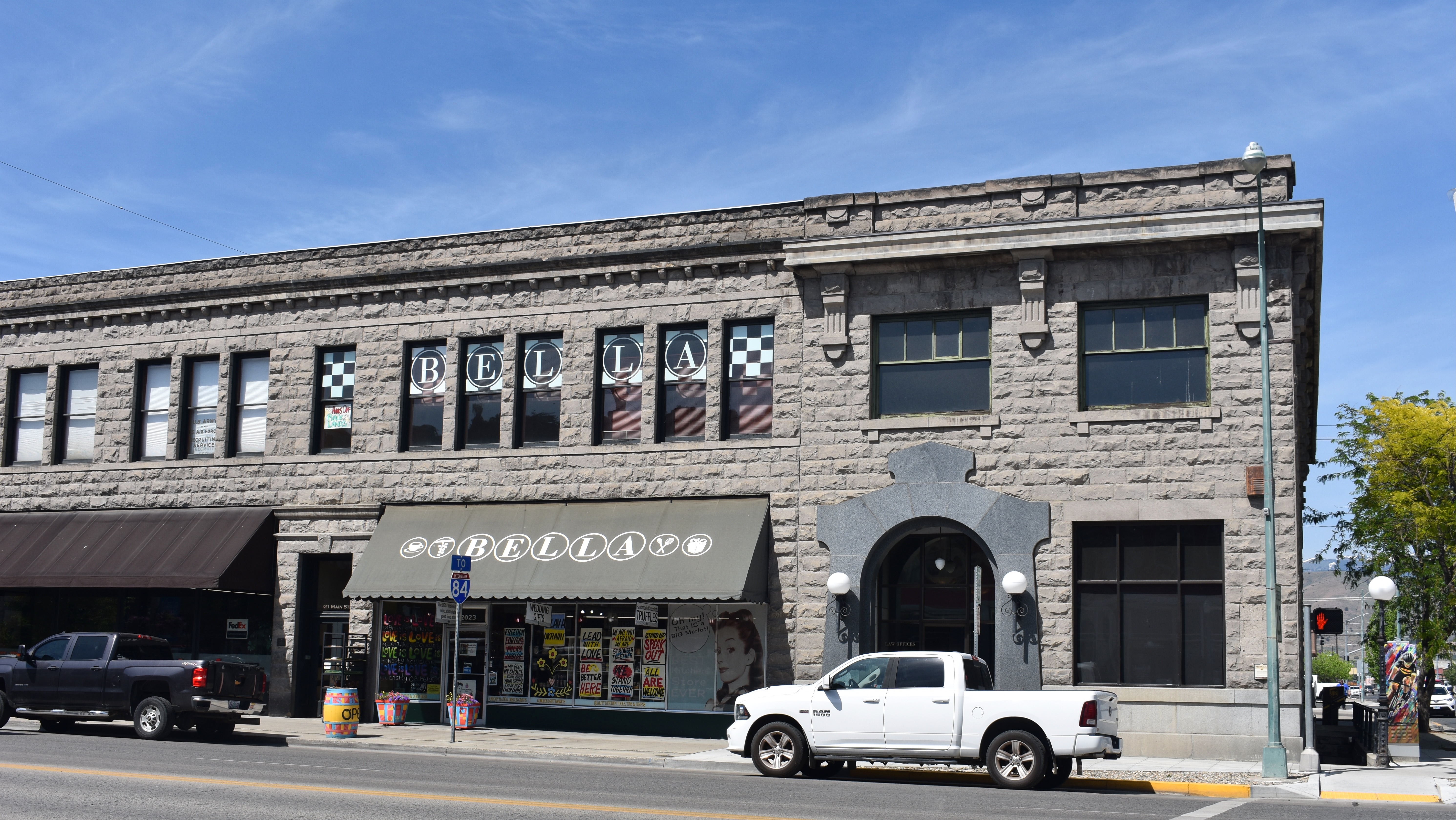SLOANS RIDGE: Fire expert retired before big blaze
Published 12:00 am Wednesday, August 2, 2006

- U.S. Forest Service fire scientists concluded more than 30 years ago that allowing some lightning-caused fires to burn could help rather than harm the forest. The 1996 Sloans Ridge fire near Baker City was one of the largest such fires in the Northwest. (Baker City Herald/S. John Collins).
By JAYSON JACOBY
Francis Mohr hoped the Sloans Ridge fire would happen but not quite the way it did happen.
A decade after the lightning-sparked blaze burned 10,500 acres in the Elkhorn Mountains, Mohr, who lived in Baker City in 1996 and still does, maintains his ambivalence about the fire.
He thinks the Wallowa-Whitman National Forest officials who decided to let the blaze burn, rather that put it out as they admit they easily could have done while it was just a smoldering spot, might have succumbed to overconfidence based on the Crawfish fire, which burned the previous year in the same section of the Elkhorns. The Crawfish fire was far smaller, just 516 acres, and unlike the Sloans Ridge fire it didn’t scorch private property.
Or produce a mushroom cloud of smoke that soared thousands of feet above the Elkhorns’ high peaks.
Or prompt some Baker County residents to suggest that the Forest Service’s fire experts could stand to take a few more classes on how fires act when it’s 95 outside.
But for all that, Mohr admits he almost certainly would have agreed with the officials who chose to watch the flames flicker on Sloans Ridge.
andquot;I might have been right there, saying ‘go for it,’ andquot; Mohr said during a recent interview.
Had he postponed his retirement by as few as six months, Mohr would indeed have been there, sitting at a table with the Wallowa-Whitman’s other fire managers and mulling over what to do with the new fire on Sloans Ridge.
Mohr retired in February 1996 after working on the Wallowa-Whitman for 19 years. His job title was wilderness fire planning specialist.
Mohr helped write the inch-thick studies in which Wallowa-Whitman officials explain why they think certain fires should burn unchecked in particular lightning-sparked blazes in wild country such as the Elkhorns.
andquot;The goal was to allow natural processes to occur,andquot; Mohr said. andquot;The effects of the fire are neither good nor bad, but it can be hard for humans to get that concept.andquot;
The lightning bolt that ignited the fire on Sloans Ridge struck on July 30, 1996, but Mohr said he didn’t learn about the blaze until a few days later.
In early August he heard that Wallowa-Whitman Supervisor Bob Richmond, based on a recommendation from Mohr’s former colleagues, had deemed the blaze on Sloans Ridge a andquot;prescribed natural fireandquot; one firefighters would watch, but not fight, so long as the flames didn’t threaten people or private property.
Mohr said he was surprised by Richmond’s decision but only slightly surprised.
andquot;Somebody’s got some real guts here,andquot; is what Mohr remembers thinking.
He had that thought because he knew how severe a risk Richmond was running by calling the Sloans Ridge blaze a prescribed natural fire.
Mohr knew, for instance, that the forests on and around Sloans Ridge were rife with lodgepole pines that died during a beetle epidemic in the 1970s.
He knew, too, that among the lodgepoles grew thickets of subalpine fir, trees which, even when alive, are quick to turn into torches due to their ground-brushing limbs and the abundance of combustible oil in their needles.
And Mohr knew that once a fire got a taste of that tinder, Forest Service officials even if they changed their minds and ordered firefighters to douse the blaze might not be able to prevent the flames from blackening most of the Baldy Unit, the 13,700-acre island of the North Fork John Day Wilderness in which the fire started, and spreading to adjacent private land.
Letting a fire burn in a 13,700-acre wilderness, in early August, is a much riskier thing to do, Mohr points out, than watching a blaze in, say, the nearby Eagle Cap Wilderness, which covers 361,000 acres.
It’s one thing to burn a slice of wilderness, quite another to burn the entire pie.
andquot;We knew what could happen, especially with the size of the (Baldy Unit), that the whole thing could burn in one event,andquot; Mohr said.
But he also recognized that the Sloans Ridge fire might well mimic the Crawfish fire from the year before a fire that Mohr helped to monitor.
andquot;In all fairness to everybody involved, I think there was a lot of confidence after Crawfish,andquot; he said. andquot;A feeling that we did it last year, we can do it again. As it turned out, the worst-case scenario, which everyone knew was possible, did happen.andquot;
Mohr’s feeling that Wallowa-Whitman officials were confident but cautious accurately describes the situation in early August 1996, said Steve Snider.
Snider worked as the fire management officer for the Wallowa-Whitman’s Burnt Powder Fire Zone, which encompasses Sloans Ridge, from 1989 until he retired in 2002.
Snider, who like Mohr still lives in Baker City, said he hoped the Sloans Ridge fire would become Crawfish: The Sequel.
But Snider said he also understood that Sloans Ridge might ignore the Crawfish script altogether.
He said as much in an interview on Aug. 5, 1996.
andquot;There’s potential for (the Sloans Ridge fire) to be as large, or larger, than the Crawfish fire,andquot; Snider said then.
Three days later the Sloans Ridge fire proved Snider’s words prophetic as the blaze, fueled by temperatures in the 90s and propelled by gusty winds, blistered its way through more than 1,000 acres of the Baldy Unit in just a few hours.
Snider calls the Sloans Ridge fire andquot;a growing painandquot; in the Forest Service’s prescribed natural fire campaign.
He remembers parking his Forest Service truck beside the Elkhorn Drive Scenic Byway in August 1996 and talking with drivers who had stopped to watch smoke soar above Sloans Ridge.
andquot;I don’t remember anyone who thought (the fire) was a good thing,andquot; Snider said.
He still remembers the man who lived near his home (Snider declined to name the man) who made a sign and put it on his pickup truck. That sign said andquot;green fleet arsonistsandquot; the green in this case being the paint color on Forest Service rigs.
Snider also recalls that several people chastised him personally, and the Forest Service in general, for letting a fire scorch their favorite elk-hunting grounds.
Others berated the agency for allowing the fire to blacken the Baldy Unit of the North Fork John Day Wilderness, a place they knew only as lush and green and cool.
andquot;There was a lot of emotional ownership of the place,andquot; Snider said.
He said he never tried to convince anyone that the concept that underlies prescribed natural fire is scientifically sound, though Snider believes it is.
He never reminded people that although the Baldy Unit had not burned during their lifetimes, it almost certainly had been scorched and then reborn many times in the past.
andquot;That land has burned for centuries, and it will again,andquot; Snider said. andquot;But at the time I never tried to tell the public that (the fire) was a success, ecologically.andquot;
Snider admits the Sloans Ridge fire was difficult to defend both because of its size it still ranks among the 20 largest fires in Northeastern Oregon in the past 50 years and because the blaze burned private property.
andquot;It’s never a good thing to burn private land,andquot; he said. andquot;That’s a tough deal.andquot;
Snider said he even had to endure criticism from his own colleagues.
He said he went to a fire seminar several months after Sloans Ridge. The instructor cited the Sloans Ridge fire as an example of a prescribed natural fire that, though it fulfilled the Forest Service’s ecological goals, failed from a public relations standpoint.
andquot;That was kind of humbling,andquot; Snider said.
Although Mohr chooses his words with care, and emphasizes that he doesn’t think Wallowa-Whitman officials were reckless in allowing the Sloans Ridge fire to burn, he does take issue with one decision officials made.
The issue revolves around the lines that fire managers drew on a map, an area known as the MMA, or andquot;maximum management area.andquot; The idea, he said, is that if a prescribed natural fire seems likely to reach the MMA boundary, then officials will declare the blaze a wildfire and call in fire crews to douse the flames.
That’s precisely what happened at Sloans Ridge.
But there was a problem, Mohr believes, with certain of the MMA boundaries at Sloans Ridge.
Officials drew some of those lines not on rocky, treeless ridgetops or other natural features where firefighters very likely could halt a blaze, but rather through the middle of the Baldy Unit. The forest on the andquot;badandquot; side of the boundary, the side where officials didn’t want the fire to go, was as readily combustible, Mohr contends, as the forest on the andquot;goodandquot; side of the boundary, where officials intended to let the fire have its way.
andquot;In certain places that boundary wasn’t defensible,andquot; Mohr said.
In other words, once the flames neared that boundary, officials couldn’t expect to simply summon firefighters and stop the flames right on that line. And as it happened at Sloans Ridge, they couldn’t do that.
Yet despite the negative legacy that sticks even now to Sloans Ridge, Snider said he still thinks prescribed natural fire the Forest Service calls the policy andquot;wildland fire useandquot; now is a wise policy.
Mohr agrees.
Sloans Ridge, Snider concedes, probably was just too big, too soon.
andquot;You don’t just go from Smokey Bear right into a Sloans Ridge,andquot; he said. andquot;People didn’t grow up believing fire is a good thing, or a natural thing. Now maybe they will.andquot;





